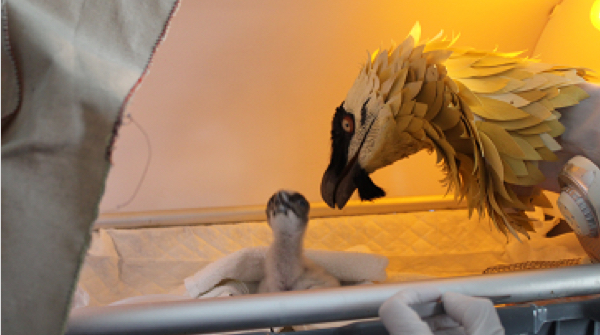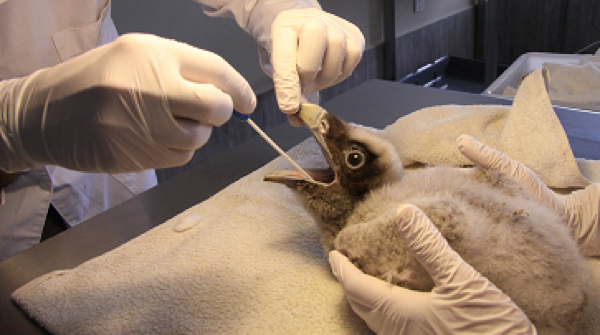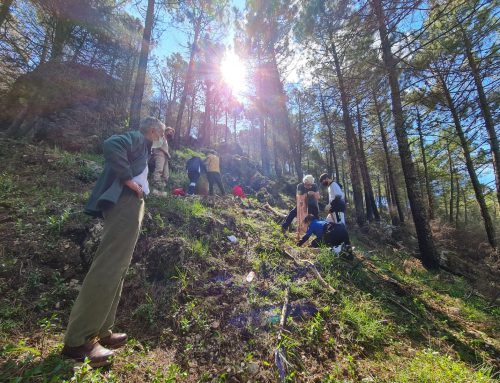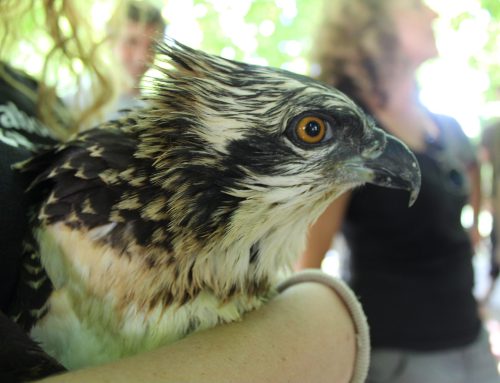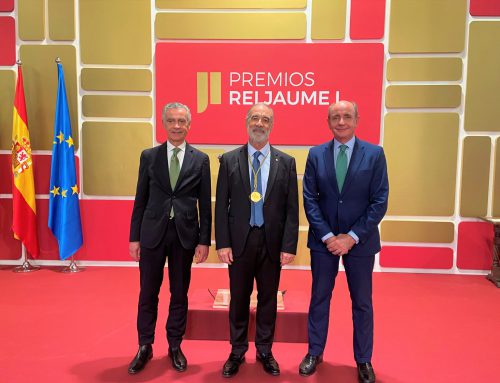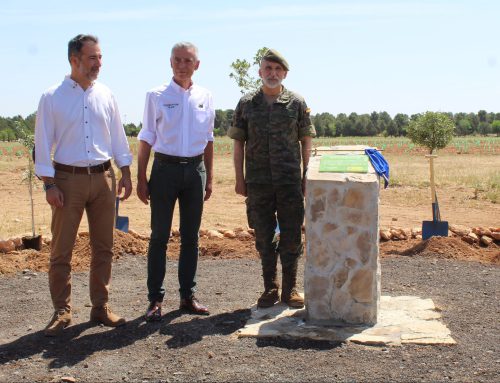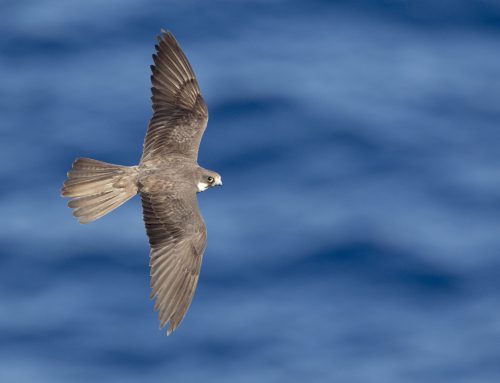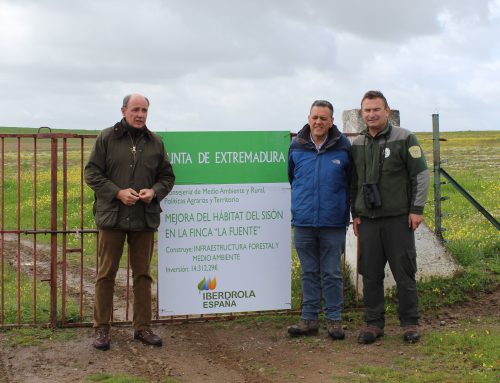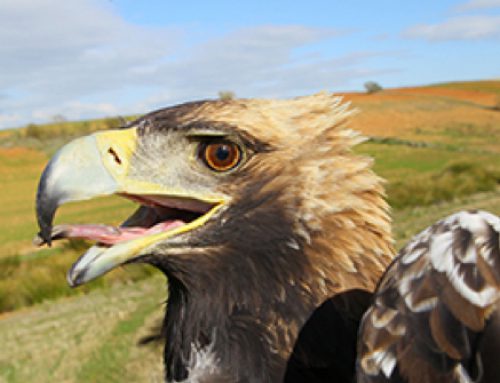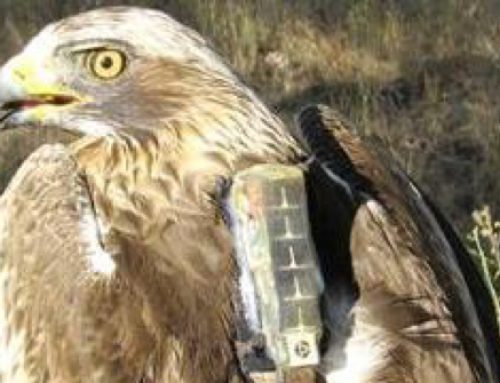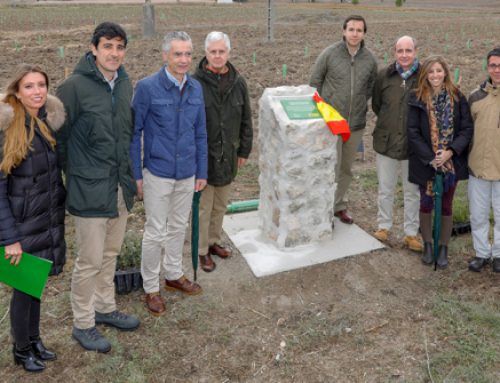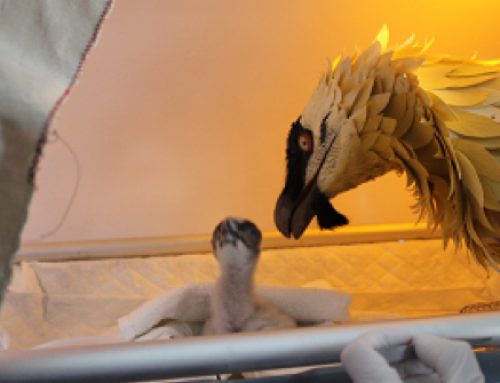Environmental conservation agreements
Fundación Iberdrola España works with different institutions and companies to improve the ecological habitat and protect biodiversity.

Fundación Iberdrola España is collaborating with several initiatives to improve the environment and support the fight against climate change.
These are some of the most important agreements we have entered into in recent years to carry out environmental projects and initiatives:
The 2030 Agenda and the SDGs; Where the reflections of experts are collected and the relationship between Security and Development is analyzed, without losing sight of the Sustainable Development Goals. Fundación Iberdrola España is commited to the SDGs, to the fight against climate change, and to gender equality policies through the empowerment of women.
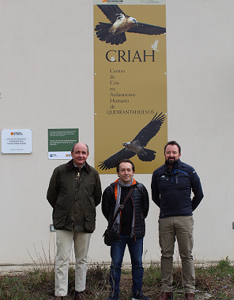
Fundación Iberdrola España and Fundación Española Para la Conservación del Quebrantahuesos (Bearded Vulture Conservation Trust) are working together to reintroduce the Bearded Vulture in the Picos de Europa.
A project to recover the bearded vulture species
We worked with the Fundación Para la Conservación del Quebrantahuesos (FCQ) (Bearded Vulture Conservation Trust) on the Recovery of the Bearded Vulture on the Picos de Europa National Park project.
The initiative, based on a cooperation agreement between the Spanish Ministry of the Environment and thirteen autonomous regions, aims to conserve the bearded vulture (Gypaetus barbatus). This carrion-eater has declined so seriously in numbers that it is now an endangered species. Its only viable habitats are the Pyrenees, with two small isolated populations on the islands of Corsica and Crete.
Creation of a new breeding ground
Specimens have been released in the Picos de Europa National Park to boost the natural population in this Cantabrian mountain range. The aim is, in the medium term, to create a new stable breeding habitat outside the Pyrenees thus reducing the risk of extinction. It also encourages the species’ connectivity, re-establishing the Iberian population of the Natura 2000 Network, which is the colonisation front for the bearded vulture in the north of the Iberian Peninsula.
The most innovative initiative to be carried out within the context of this project is the study of the effect of Climate Change on the prevalence and morbidity of diseases transmitted by biological agents in the bearded vulture population in the Central Pyrenees. The findings of this study are expected to provide valuable information on the future of this species in the short and medium terms.
The project involves the release of copies, ensuring good adaptation results.
We collaborated with the Fundación Patrimonio Natural de Castilla y León (Castilla-León Natural Heritage Foundation) in the region of Páramos (in the north of the province of Burgos) on an interesting habitat improvement project to create a rest area for the many birds that follow the migratory route between northern Europe and the lakes in Villafáfila, La Nava and the South of the Iberian Peninsula every year. Another objective of the project was to make the wetland a refuge and breeding ground for wild animals that live in the area.
In partnership with the Fundación Patrimonio Natural de Castile and León (Castilla-León Natural Heritage Foundation), the “Conservation plan for Bonelli’s eagle in Arribes de Duero” was created to improve the habitat of Bonelli’s eagle in the hunting grounds throughout their “territory” to recover and maintain the species. The plan entailed providing supplementary food to guarantee reproductive success and monitor changes in population. In 2014, six chicks were tagged to monitor reproductive success. Other steps were taken to improve habitats to recover and maintain populations of the most important prey species, such as the wild rabbit. Most of the tasks involved clearing scrubland, sowing seeds, and improving water points and traditional grazing.
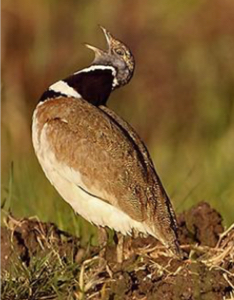
The Little Bustard is a steppe-land bird that lives on flat or undulating land occupied by crops or livestock.
In collaboration with the Council for the Environment and Rural Areas in Extremadura, we have carried out a project to improve the habitat of the Little Bustard (Tetrax tetrax) and other steppe-land birds in the Tagus International Natural Park.
This gregarious species generally occupies cropland and/or livestock land, which is flat or undulating, with few trees and scrubland, used for rain-fed crops and large pastures. Extremadura is one of the Little Bustard’s main breeding areas.
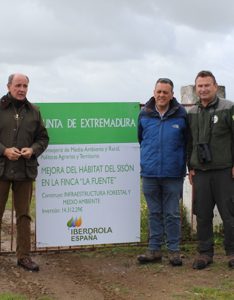
The objective of this intervention has been to improve the habitat of this gregarious species whose population has reduced by 60% in recent years.
Its natural habitats have been transformed and destroyed, mainly due to harvesting and reaping during egg incubation and chick hatching periods and breeding population numbers have clearly declined in recent years, with data showing an almost 60% drop in the Bustard population between 2005 and 2015.
Other causes resulting in the loss of the species’ optimal habitat and decline in numbers include occupation by infrastructure, encroachment by developed areas and forestation of pastures and old farmland, among others.
Food for an important habitat
To reverse this trend, we are creating a permanent improved pasture by irrigating and sowing a small area with seeds as a suitable place for these birds to build nests. As a result, we have worked on:
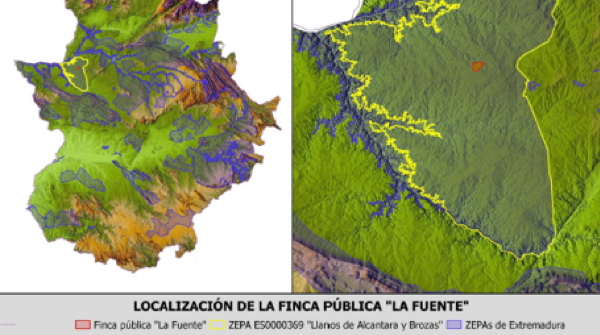
- La Fuente public estate in Llanos de Brozas and Alcántara, a natural space covered by the Natura 2000 network under the declaration of Special Protection Areas for Birds (SPA) and Special Areas of Conservation (SAC) in the municipality of Villa de Rey to the west of Cáceres.
Conditioned learning programme
This programme aims to reduce deaths by electrocution of Spanish Imperial Eagles which have been either rehabilitated or bred in captivity through conditioned learning.
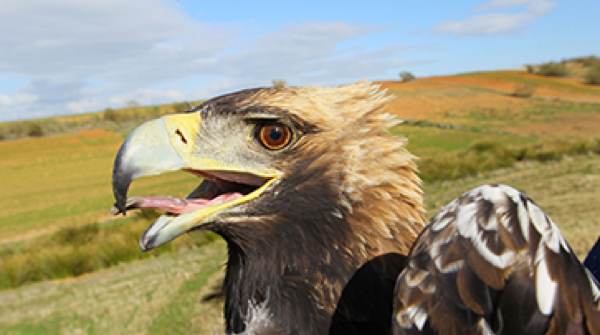
Fundación Iberdrola is collaborating with Fundación Aquila to reduce the risk of electrocution in Spanish Imperial Eagles
In 2013, an aviary was built at the Fundación Aquila “Eagles of Fuente Empedrada” Holistic Centre in Lagartera, Toledo, to conduct research on how to improve the diagnosis of diseases and maintain the genetic variability of endangered species..
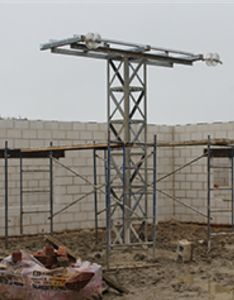
The conditioned learning system aims to protect Spanish Imperial Eagles in rehabilitation or bred in captivity from being electrocuted by electricity cables.
An electricity pylon equipped with an electric fence was installed at the aviary to facilitate conditioned learning by means of low-voltage electrical impulses. This teaches eagles not to perch on these structures after release.
Experience with other projects
Rehabilitating and breeding these birds is a laborious process that requires considerable effort and scientific knowledge. This system improves reintegration outcomes to benefit the species and its conservation.
Fundación Iberdrola España and Fundación Aquila carried out this pioneering project in Spain with the experience and involvement of researchers on other international projects where this method has been used successfully with species including the California condor (with over twelve years of positive results) and the great Philippine eagle.
This initiative was part of the United Nations Millennium Ecosystem Assessment to implement a research project and analysis of ecosystems in Spain. This initiative was carried out in collaboration with the Autonomous University of Madrid and the Biodiversity Foundation. The conclusions of the project revealed substantial transformations in some of these ecosystems. After its presentation at International Congress “ Make the World a Wilder Place” (international forum of reference for the environment and biodiversity), the “The Millennium Ecosystem Assessment in Spain” information guide was published.

